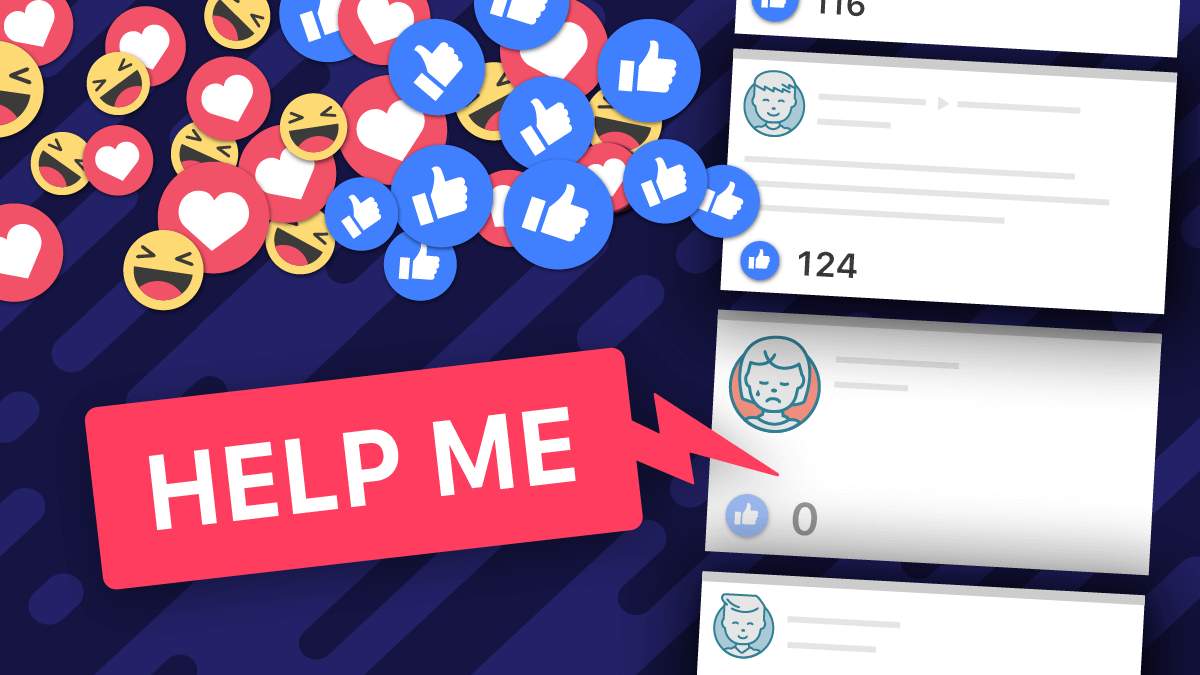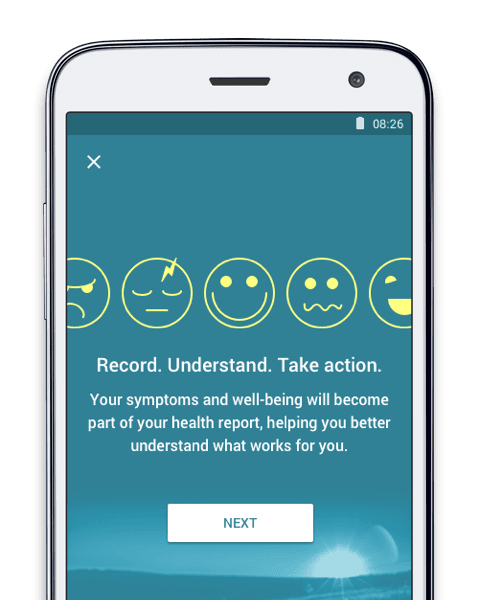“I want to end it all.” If a friend or loved one published a post indicating thoughts of suicide or self-harm on social media, would you know how to help them? Such indications made on social media should be taken as seriously as those made anywhere else, so it is important to know how to respond should you come across one or if you are worried about someone’s online behavior.
In this article we discuss how to respond to such posts made by people you know personally. If you come across a suicidal post from a stranger or someone you don’t know personally, we have another article here:
How to Respond to Suicidal Posts on Social Media
Helpful guides used in this article:
- Help a Friend in Need by Facebook and the Jed Foundation
- Responding to Suicidal Content Online by the National Suicide Prevention Alliance
- 5 Step Guide for Communicating with Someone Who May be Suicidal by #BeThe1To
- Help Someone Else by the National Suicide Prevention Lifeline
Suicidal Posts on Social Media
A tragic story made the news in the UK in 2011.
Simone Back, 42, posted this message to her 1,048 Facebook friends on Christmas Day: “Took all my pills be dead soon bye bye everyone.”
The comments, of which there were 148, contained accusations of lying and a declaration that a troubled relationship “was not a good enough reason” for her to overdose.
Friends further afield pleaded for those local to Simone to visit and check on her wellbeing – but these went unheeded.
Her body was found the next day.
Sadly, there are many other examples of stories like Simone’s.
Spotting the Warning Signs
One of the biggest challenges in helping somebody is recognizing whether their social media activity indicates suicidal intent in the first place.
Explicit language suggesting a person is at high risk of suicide or self-harm should be acted upon without hesitation, as that person’s life may be in imminent danger.
If you believe a person is in urgent danger, act immediately. Contact them directly if you are able to or alert a close friend or loved one. Call the emergency services, local police station, or a suicide prevention helpline.
However, the signs may not be so obvious. Victor Schwartz, psychiatrist and chief medical officer at the Jed Foundation, told Mic how to spot other warning signs.
Change in Tone
Everybody has an online personality, and you are likely familiar with the tone your friends and loved ones use on social media.
According to Schwartz, “something that feels different from the person’s usual content or the way they're expressing him or herself, that should get your antenna up.”
Irritability, Anger, Violence, and Revenge
Use of language that indicates the above emotions may suggest someone needs help. This can extend to one’s use of hashtags and emojis.
Of course, a rant or show of anger alone is not evidence of a serious issue, but it could be one of the warning signs. The important thing, according to Schwartz, is to trust your instincts. As per the previous point regarding tonality, much of this comes down to the person’s character.
Sad Posts or Photos
As well as emotions such as anger, signs of isolation or worthlessness are to be taken seriously. Posts such as ‘I don’t want to get out of bed... ever’ could be a sign of depression.
Similarly, if someone uses language like ‘I can’t do anything right’ or that they are nothing but a burden to others can point towards feelings of worthlessness.
Even the use of colors and brightness in photos published are indications of mental health, according to researchers.
Sharing other photos, memes, and quotes about emotional distress should also be noted – especially if doing so is out of character or becomes more frequent.
Posting at Unusual Hours
If someone regularly posts late at night or in the early hours of the morning, it may be a sign of insomnia that could be related to depression or other mental health issues.
Again, this alone may not suggest the person is in need of support, but it’s worth taking into consideration along with the tone of the post(s).
For a more detailed guide regarding warning signs, take a look at the Help a Friend in Need guide made by Facebook in conjunction with the Jed Foundation.
If you believe someone’s social media activity indicated they are in need of support, the next step is knowing what to do.
How to Help Someone in Need of Support
There is no one-rule-fits-all response to posts indicating thoughts of suicide or self-harm, but there is a general rule of thumb that applies: Do not ignore it.
There is a difference between ignoring posts and choosing not to intervene. If there is evidence that other people are already offering the necessary support, your input may not be required. Some good examples can be found in this guide.
However, do not simply assume other people will respond.
And bear in mind the earlier message: If you believe a person is in urgent danger, act immediately. Contact them directly if you are able to or alert a close friend or loved one. Call the emergency services, local police station, or a suicide prevention helpline.
If you do not believe their life to be in immediate danger but feel as though you need to respond, there are several courses of action you can take.
Reach Out Yourself
The first option is to reach out to the person yourself, be it online, over the phone, or in person.
If done online, it is best done with a private message rather than a public reply. The benefit of social media is the ability to do this regardless of your location.
Suicide can be a difficult topic to discuss, whether in person or online. The National Suicide Prevention Helpline offers some tips on how to do so:
- Be direct. Talk openly and matter-of-factly about suicide
- Be willing to listen. Allow expressions of feelings. Accept the feelings
- Be non-judgmental. Don’t debate whether suicide is right or wrong, or whether feelings are good or bad. Don’t lecture on the value of life
- Get involved. Become available. Show interest and support
The Help a Friend in Need guide offers similar advice and recommends directly mentioning what it is that gave you cause for concern.
Let the person know you are there to support them in any way you can.
This is not restricted to close friends and loved ones. Reaching out to someone you do not know well or who you haven’t seen for a long time can be just as helpful. You can ask if they would like to talk about it and, if not, offer your support in finding the right person or people to speak to.
This five-step guide available from #BeThe1To’s website offers excellent advice about how you can provide long-term support.
Reach Out to a Close Friend or Loved One
As previously mentioned, reaching out directly to the person you are concerned about is not restricted to close friends or loved ones.
However, you may not be comfortable doing so if you are not close to the person in question (either emotionally or physically).
Reaching out to someone you believe is in a better position to help is a valuable alternative.
A simple message explaining why you are concerned may be enough to get the ball rolling and ensure the person you are worried about receives the support they need.
Report Suicidal Posts
Finally, you can report posts directly to the social media platform on which they have been posted.
The major social media channels take suicide prevention seriously. In fact, artificial intelligence is being developed to automatically detect such posts, so they can be reviewed and acted upon if necessary.
This technology, however, is in its infancy and cannot be solely relied upon.
Even if posts you are concerned about have been flagged by AI, there is no harm in you also reporting it. Nor is there any harm in the same post being reported by multiple people.
Considering how quick and easy it is to do, there is no reason not to use the reporting features made available by all of the major social media platforms.
Here are some worth having quick access to:
For other platforms, a quick search for ‘reporting suicidal posts on [social media platform]’ will almost certainly direct you to the relevant page.
Posts pertaining to suicide, self-harm, or other mental health issues are easy to scroll past on social media. It is easy to assume that someone else will respond. And it is easy to underestimate the serious nature of such posts.
However, there are enough examples of people losing their lives having posted such content to emphasize how serious they can be.
Choosing to respond rather than ignore a post can help prevent further such tragedies from occurring.
Take a look at some of the other posts on the MyTherapy blog:



